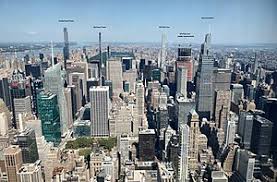The Art of Building: Creating Timeless Structures That Define Our World

The Art of Building: Creating Structures That Stand the Test of Time
Building is more than just putting bricks and mortar together – it is an art form that shapes our cities and landscapes. From ancient civilizations to modern skyscrapers, the process of building has evolved, but its essence remains the same: to create structures that serve a purpose and withstand the passage of time.
One of the key elements in successful building projects is careful planning and design. Architects and engineers work together to envision structures that not only meet functional requirements but also blend harmoniously with their surroundings. The choice of materials, construction techniques, and sustainability considerations all play a crucial role in creating buildings that are not just aesthetically pleasing but also durable and efficient.
Throughout history, buildings have served as symbols of power, culture, and innovation. From the towering pyramids of Egypt to the intricate temples of Asia, each structure tells a story of its time and the people who built it. Today, modern architecture continues to push boundaries with innovative designs that challenge traditional notions of space and form.
Building is also about creating spaces that inspire and enrich our lives. Whether it’s a cozy home where families gather or a grand cathedral that evokes awe, buildings have the power to evoke emotions and shape our experiences. Sustainable building practices are gaining importance as we strive to reduce our environmental impact and create healthier living environments for future generations.
As technology advances, so do our capabilities in building design and construction. From 3D modeling software to advanced building materials, architects and builders have access to tools that allow them to bring their visions to life with greater precision and efficiency. The integration of smart technologies in buildings further enhances functionality and energy efficiency.
In conclusion, building is an art form that combines creativity, science, and craftsmanship to create structures that define our world. Each building tells a story – of its creators, its purpose, and its enduring legacy. As we continue to innovate and push boundaries in architecture and construction, we shape the future built environment for generations to come.
6 Essential Tips for Maintaining a Safe, Efficient, and Eco-Friendly Building
- Ensure proper ventilation in all rooms.
- Regularly inspect and maintain the roof for any damages.
- Use energy-efficient lighting and appliances to save on electricity costs.
- Implement a recycling program to reduce waste production.
- Keep walkways and exits clear for safety purposes.
- Consider installing water-saving fixtures to conserve water.
Ensure proper ventilation in all rooms.
Ensuring proper ventilation in all rooms is essential for maintaining a healthy and comfortable indoor environment. Good ventilation helps to remove stale air, odors, and pollutants while allowing fresh air to circulate throughout the space. Proper airflow can also help regulate temperature and humidity levels, creating a more pleasant living or working environment. By incorporating effective ventilation systems in each room, you can promote better indoor air quality and enhance the overall comfort and well-being of occupants.
Regularly inspect and maintain the roof for any damages.
Regularly inspecting and maintaining the roof for any damages is essential in preserving the integrity and longevity of a building. The roof serves as the first line of defense against the elements, protecting the structure and its occupants from rain, wind, snow, and other environmental factors. By conducting routine inspections and addressing any issues promptly, building owners can prevent costly repairs and ensure that the roof remains structurally sound. Proactive maintenance not only extends the lifespan of the roof but also contributes to the overall safety and efficiency of the building.
Use energy-efficient lighting and appliances to save on electricity costs.
By incorporating energy-efficient lighting and appliances into your building design, you can significantly reduce electricity costs while also minimizing your environmental impact. Choosing LED lighting and ENERGY STAR-rated appliances not only lowers energy consumption but also contributes to creating a more sustainable and eco-friendly living or working space. By investing in energy-efficient solutions, you can enjoy long-term savings on electricity bills while promoting a greener future for generations to come.
Implement a recycling program to reduce waste production.
Implementing a recycling program is a crucial tip in building to reduce waste production and promote sustainability. By segregating and recycling materials such as metal, wood, and plastics, construction sites can significantly decrease the amount of waste sent to landfills. Not only does this practice help protect the environment by conserving natural resources and reducing greenhouse gas emissions, but it also demonstrates a commitment to responsible building practices that benefit both the present and future generations.
Keep walkways and exits clear for safety purposes.
Ensuring that walkways and exits are kept clear is essential for maintaining a safe environment in any building. By keeping these areas free from obstructions, such as clutter or debris, you help facilitate smooth movement and easy access in case of emergencies. Clear walkways and exits not only promote safety but also enhance the overall functionality of the space, allowing occupants to navigate comfortably and efficiently. Prioritizing the clearance of walkways and exits demonstrates a commitment to safety and preparedness, making it easier for individuals to evacuate quickly and safely when needed.
Consider installing water-saving fixtures to conserve water.
Consider installing water-saving fixtures in your building to conserve this precious resource. By opting for low-flow toilets, faucets, and showerheads, you can significantly reduce water consumption without compromising on performance. Not only does this eco-friendly choice help protect the environment, but it also leads to cost savings on water bills in the long run. Making small changes like installing water-saving fixtures can have a big impact on sustainability and efficiency in your building.
